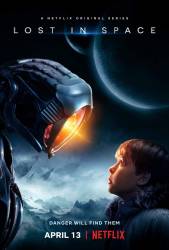Plot hole: The show starts with the Jupiter crashing into the planet... also the other Jupiter seems to have had problems landing on the unnamed planet... why? The Jupiters were fully capable of flying around the planet as we saw it in other moments. None of them were attacked by the robot, they are not escape pods. So why crash land into the planet? Also why get out of the ship just to be stranded on an icy hellhole? The space ship is waterproof, as we saw in another episode. So why get out just to have one person go in again and get trapped on ice? And that's just the tips of the iceberg, pun intended.

Lost in Space (2018)
1 plot hole in Impact
Starring: Toby Stephens, Molly Parker, Taylor Russell, Maxwell Jenkins, Mina Sundwall
Genres: Sci-fi

Other mistake: Right at the start, as they're crashing, the computer narrates their rapidly-dropping altitude in feet. But the "altitude" dial we're shown is in metres. Most noticeable as they cross the 3,000 mark, when the computer voice and the height say/show the same number at the same time, despite the different units. 3,000m would be more like 9,000 feet, or 3,000 feet would be more like 1,000m. (00:03:20)
Danger, Will Robinson - S1-E10
[Radio beeping in Morse code]
John Robinson: It's Morse code.
Don West: What's he spelling?
John: F.
Don: OK.
John: U.
Don: "FU"? That's his message? "FU"? This is how your kids talk?
John: E.
Don: OK, that changes everything.
John: L.
Don: Fuel! They have fuel.
John: Hey, they got fuel!
Don: Yeah! Yeah. So if we'd just waited a couple hours, we wouldn't be here. Great.
Question: If only the Resolution was able to do galactic travel, then how was Fortuna able to do the same?





Answer: The Fortuna didn't have an Alien Engine. The cover story was the Fortuna was to explore Alpha Centauri but it was exploring the rift. The rift is what the Alien Engine creates and explains how the Fortuna was able to travel to a distant planet (what you call "galactic travel").
Bishop73